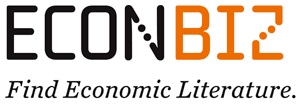- 4. Country Profile: Finland
- 4.1. Introduction
- 4.2. Background Statistics on Finland
- 4.2.1. Recent Trends
- 4.2.2. Expenditure
- 4.3. Organisation of Asylum Procedure
- 4.3.1. Overall Organisation
- 4.3.2. Main Non-governmental Organisations Involved
- 4.4. Legal Basis
- 4.4.1. Main Legislation
- 4.4.2. Recent Legislative Changes<br´> 4.4.3. Planned Changes
- 4.4.4. Types of Statuses Granted
- 4.5. Arrangements Immediately Upon Arrival
- 4.5.1. Main Procedures and Arrangements
- 4.6. Accommodation
- 4.6.1. Reception Figures
- 4.6.2. Names and adresses of accommodation and reception centres
- Helsinki Reception Centre
- 4.6.3. Special Treatment
- 4.6.4. Standard of Accommodation
- 4.7. Means of Subsistence
- 4.7.1. Rules and Practices of Means of Subsistence
- 4.7.2. Reasons / Principles Behind the System and Recent / Future Changes
- 4.7.3. Provision of Subsistence
- 4.8. Access to Education
- 4.8.1. Rules and Administrative Practices Regarding Access to Education
- 4.9. Access to the Labour Market
- 4.9.1. Rules and Practices Regarding Access to the Labour Market
- 4.10. Access to Health Care
- 4.10.1.Description of the Rules and Practices Regarding Access to Health Care
- 4.11. Rules on Detention and Other Restrictions on Free Movement
- 4.11.1.Rules and Practices
- 4.12. Differences in Treatment According to the Stage of the Asylum Procedure and the Type of Status Sought
- 4.13. Political Atmosphere Surrounding Refugees and Immigrants
- 4.13.1.Major Historical Changes in the Political Atmosphere
- 4.13.2.Political Attention and Public Opinion Today
- 4.13.3.Attitude Patterns and Political Groupings in the Debate
- 4.13.4.Attitude of the Country Concerning International Co-operation on Asylum Matters
- 4.13.5.Other Kinds of International Co-operation
- 4.14. Other Information
Persistent link: https://www.econbiz.de/10009637404
